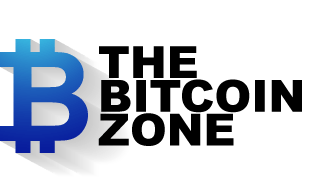
British inventors had a great task ahead of them in the 19th century: the Industrial Revolution was changing the country, but traditional approaches could not keep up with fast urbanization and technical requirements. The answer came from accepting unusual, "non-linear," answers rather than from well-traveled roads. This kind of thought, which produces innovations from textiles to railroads, shows how great change can be brought about by breaking free from accepted wisdom.
This creative energy in Britain extended beyond the land. Finding their longitude at sea was one of the toughest problems sailors faced in the eighteenth century. Many shipwrecks and lost lives resulted from the impossibility to precisely identify the east-west location of a ship. Understanding the seriousness of the issue, the British government set aside the Longitude Prize in 1714—a sizable incentive for anyone able to come up with a workable answer.
As the Longitude Prize stirred minds across the nation, many physicists and astronomers sought a rational, linear approach—refining star charts and lunar tables based on proven procedures. But John Harrison, a Yorkshire self-taught clockmaker, saw things differently. Time, he thought, was the secret: a sailor might find longitude by comparing local time at sea with the precise time at a fixed reference point, like Greenwich Mean Time. Devoting himself to this idea, Harrison built an entirely new sort of timepiece—the marine chronometer—that would redefine maritime navigation.

Unlike any clock before it, Harrison’s maritime chronometer was built to survive the harsh realities of life at sea. It was unaffected by fluctuations in temperature, pressure, or humidity, withstood corrosion from sea air, and maintained its accuracy on a continually moving ship. Crafting such a clock requires years of relentless creativity, overcoming intricate mechanical obstacles and improving his ideas over countless iterations.
Despite confronting severe opposition from the scientific community and overcoming multiple setbacks, Harrison’s groundbreaking innovation changed marine navigation. His chronometer provided mariners with a reliable technique to estimate longitude, substantially lowering the danger of shipwrecks. In doing so, he not only saved many lives but also enhanced the British Empire’s naval power, protecting its trade routes and spreading its reach throughout the globe.
Harrison’s tale is a tribute to the potential of thinking differently and pushing existing rules to produce something genuinely innovative. It’s a tale that resonates strongly and inspires our approach to innovation in the blockchain world.
The Limitations of Linear Thinking
Linear thinking, although certainly essential, frequently restricts us to the familiar. It’s like following a well-trodden path—safe and predictable, yet seldom leading to discoveries or significant change.
In today’s fast moving environment, this approach might be restricting. We face complicated, multi-dimensional situations that resist simplistic answers. Persisting with linear approaches is analogous to upgrading the horse-drawn carriage when what’s actually needed is the advent of the automobile—a total shift in vision and possibilities.
Take the finance industry, for example. For decades, we’ve refined existing systems: changing interest rates, improving regulatory frameworks, and inventing complex financial instruments. Yet they are incremental improvements within the same paradigm—enhancements of the familiar without fundamentally altering the system.
Meanwhile, the world around us is evolving at an unprecedented rate. Technological breakthroughs, geopolitical upheavals, and expanding global interconnection need more than simply adaptations; they call for a reassessment of our systems from the ground up. Traditional, linear methodologies are frequently ill-equipped to traverse this world, where change is exponential and the need for daring, non-linear thinking is more critical than ever.
Embracing Non-Linear Thinking for Breakthroughs
Non-linear thinking drives us to move off the usual road and explore unexplored areas. It’s about making unexpected connections, questioning core assumptions, and keeping open to ideas that can seem counterintuitive or even radical. Alan Turing, the British mathematician whose work during World War II embodied this approach, didn’t only seek better human techniques to decipher enemy messages—he envisioned a machine capable of processing information at unprecedented rates. This breakthrough approach not only helped shorten the war but also formed the framework for contemporary computers, changing disciplines from encryption to artificial intelligence.
Turing’s vision emphasizes the effect of non-linear thinking. Instead of perfecting the tools at hand, he developed something altogether new, having consequences well beyond his initial purpose. In the same way, embracing non-linear thinking today might lead to innovations that radically change sectors and open up possibilities we have yet to fathom.
Cultivating a non-linear mentality needs curiosity, perseverance, and a willingness to challenge the existing quo. It’s about valuing multidisciplinary cooperation, where insights from domains like technology, economics, and science intersect to generate innovation. By accepting multiple viewpoints and making connections across disciplines, we create fertile ground for fresh ideas and revolutionary discoveries. This approach not only promotes growth but also equips us to adapt to a world that is always altering in unanticipated ways.
Read Also: What are Eco Friendly NFTs
Enter Blockchain: A Testament to Non-Linear Innovation
Blockchain technology is a perfect illustration of the power of non-linear thinking. By questioning conventional conceptions of trust and authority in transactions, it established a decentralized model where agreement is achieved collectively, rather than imposed by a single authority. This transformation wasn’t merely an upgrade on current financial systems; it was a fundamental break from old paradigms, reinventing how data, assets, and agreements might be handled and validated.
This non-linear approach unleashed breakthrough possibilities, from smart contracts and decentralized apps to totally new kinds of asset ownership. These advances weren’t about incremental change; they revolutionized the underpinnings of digital trust and trade, generating a flood of new applications across sectors.
Take, for instance, blockchain’s function in validating the provenance of items, which combats counterfeit products by giving a clear, traceable record of authenticity. Or imagine its usage in assistance distribution in underdeveloped nations, where secure, tamper-proof records guarantee that resources reach those who need them most. These applications didn’t arise from linear upgrades; they developed from reimagining what’s possible when traditional limits are freed, allowing blockchain to handle complicated, real-world difficulties in whole new ways.
The Journey of Innovation in Blockchain

At the core of innovation is the awareness that nothing remains unaltered. Change presents both possibilities and problems. In blockchain and digital assets, integrating existing currencies involves more than technology—it asks for a thorough rethink of legal frameworks, consumer acceptance, and the nature of value transmission.
In the UK, attempts are ongoing to transfer the pound sterling—the world’s fourth-largest currency—onto the blockchain. This program intends not merely to digitize the money but to provide a solid framework for on-chain financial services within a safe regulatory environment. The objective is a fully backed, one-to-one redeemable digital pound that conforms with all applicable regulations, allowing different applications from digital asset trading and settlement to on-chain foreign exchange, retail transactions, and peer-to-peer payments.
This strategy represents an increasing trend among regional issuers that, with strong insights into their own markets, yet maintain a global view. By recognizing local demands while embracing international collaboration, these issuers are producing digital currencies that sustain their home economies and interact effectively with global financial institutions.
The obstacles are significant—navigating regulations, gaining confidence in digital money, and inventing technology that fulfills high requirements for security and efficiency. Overcoming these challenges demands creativity, resilience, and a dedication to new frontiers—the core of non-linear thinking.
Cross-Border Innovation and Collaboration
Innovation knows no bounds. The ongoing partnership between the UK and the US—the “special relationship”—has traditionally fostered considerable improvements in finance and technology. As we explore new types of digital assets and blockchain applications, there is a chance to expand these links, generating tremendous instruments for investment, trade, and cooperation.
Engaging with foreign blockchain efforts creates new paths for diversification, cross-border transactions, and engagement in dynamic financial ecosystems. It urges us to be part of a global network where invention transcends borders and is magnified via collaborative efforts.
Imagine the possibilities: real-time settlements without the friction of existing systems, wider access to new markets with fewer constraints, and the opportunity to provide customers cutting-edge financial services that seamlessly combine traditional and digital banking.
Conclusion
As we prepare to wrap out this year and look into a new one, the stories of innovators like John Harrison and Alan Turing remind us of a fundamental truth: genuine breakthroughs emerge when we think differently, challenge traditions, and have the bravery to travel into the unknown.
British novelist and philosopher G.K. Chesterton once correctly observed, “The real voyage of discovery consists not in seeking new landscapes, but in having new eyes.” This notion resonates now more than ever. In a world that is always developing, the key to advancement resides in our capacity to tackle difficulties with fresh perspectives, adopting non-linear thinking and reinventing what’s possible.
